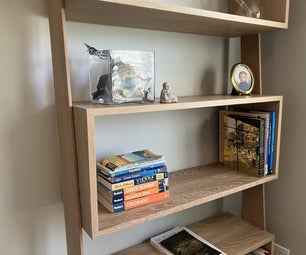Introduction: Curved Concrete Bench
Hi, my name is Adam and I study Industrial Design.
This is my first instructable here, my recent work presented:
Curved bench made from white concrete, Which weights approx 150. kg
Step 1: Tool List and Materials Needed for This Project
- Carpenter's level (All work surface must be leveled properly before starting work)
- Drill with mixer head
- Zwaluw High Tack
- A Formica/HPL covered wood plate (iv used approx 60" x 80" or 2m x 1.5m)
- A lot of supporting wooden - made easily with
DEWALT DW777 Compound Cross Cut Mitre Saw (makes the making of the supporting wooden MUCH EASIER)
http://www.youtube.com/watch?v=fV-FjlHnRFA
- Acetone
- Sandpaper 80-140-240 GRIT
- Fine Brush
- Concrete sealer
- some screws
- Work Gloves
- Disposable gloves
- Goggles
- Dremel tool
- 2 PVC Pipes (for the legs)
- 6mm Steel wire
- Polystyrene board 20mm thick
- some Clamps
- Steel Brush
- Sandbag
- White cement bag
- Fine Gravel bag
- some old buckets
- Spatula
- Gas Burner
- Duck Tape
- Grindstone angle
- Drill with mixer head
- Zwaluw High Tack
- A Formica/HPL covered wood plate (iv used approx 60" x 80" or 2m x 1.5m)
- A lot of supporting wooden - made easily with
DEWALT DW777 Compound Cross Cut Mitre Saw (makes the making of the supporting wooden MUCH EASIER)
http://www.youtube.com/watch?v=fV-FjlHnRFA
- Acetone
- Sandpaper 80-140-240 GRIT
- Fine Brush
- Concrete sealer
- some screws
- Work Gloves
- Disposable gloves
- Goggles
- Dremel tool
- 2 PVC Pipes (for the legs)
- 6mm Steel wire
- Polystyrene board 20mm thick
- some Clamps
- Steel Brush
- Sandbag
- White cement bag
- Fine Gravel bag
- some old buckets
- Spatula
- Gas Burner
- Duck Tape
- Grindstone angle
Step 2: Sketch & Calculations
Work plans were prepared and printed using SOLIDWORKS
Step 3: Placing Up Wooden Support
Place the supporting wood without glue.
Glue it only after you have checked the correct position on "dry mode"
Glue it only after you have checked the correct position on "dry mode"
Step 4: Finish Reinforcement
Reinforcement finalized by screws, and some silicone adhesive
Step 5: Adding the Frame and Styrofoam Blocks
Concrete Frame is made from 6mm steel wire hand twisted
Styrofoam blocks is the 'trick' here, making the cut holes inside, we will Dissolving Styrofoam in Acetone on the next few steps..
Step 6: Mixing the Concrete
Start by using a shovel to mix well the mixture, and only than use the electric drill for the final mixing
Step 7: Pouring the Concrete
Gently pour the concrete to the mold with a small spatula
Step 8: Attaching the P.V.C Pipes
Carefully cut the styrofoam to flat level as the concrete and clean the area from concrete leftovers and place the P.V.C tubes in the exact sitings were the iron frame is protruding.
secure it with silicone and than pour concrete inside.
secure it with silicone and than pour concrete inside.
Step 9: Removing the Styrofoam
removing the styrofoam with acetone, USE GLOVES
allso, I did make some holes with screwdriver in the styrofoam, resulting increase in the acetone etching speed.
allso, I did make some holes with screwdriver in the styrofoam, resulting increase in the acetone etching speed.
Step 10: Unscrewing
Take off the walls first, by removing all of the odds and ends, screws and so.
for the legs iv used a dremel disc to start 'pinch point' while heating that point with a torch gun and pulling with Pliers until it riven apart.
Step 11: Brushing, Sanding, Cleaning
After removing all the dirt off the bench.
Pour a lot of water and soak in the concrete during each brushing and polishing process.
Time to start brushing with a wire brush.
Then, with three levels of sandpaper 80-140-240 GRIT
Note: The Chamfer is made by starting with dremel sanding drum and than polished by hand with fine sandpaper.
Note: The Chamfer is made by starting with dremel sanding drum and than polished by hand with fine sandpaper.
Step 12: Concrete Sealer
And now the final part of this instructable:
Impregnation of the bench in 'concrete sealer'
Just use a gentle brush to apply on all over the surface.
This step will ensure years of brilliant white color
And resistance to rain and dirt
Step 13: TIP:
if you left with extra concrete you have nothing to do with - DONT TROW IT - instead make beautiful garden rocks simply:
1. pour concrete into a sandbag
2. slam it with a stick to align it
3. let it set and come check tommorow youre new garden rock!
Thanks for reading my instructable + if you like it let me know ;)
Cheers,
Adam.







